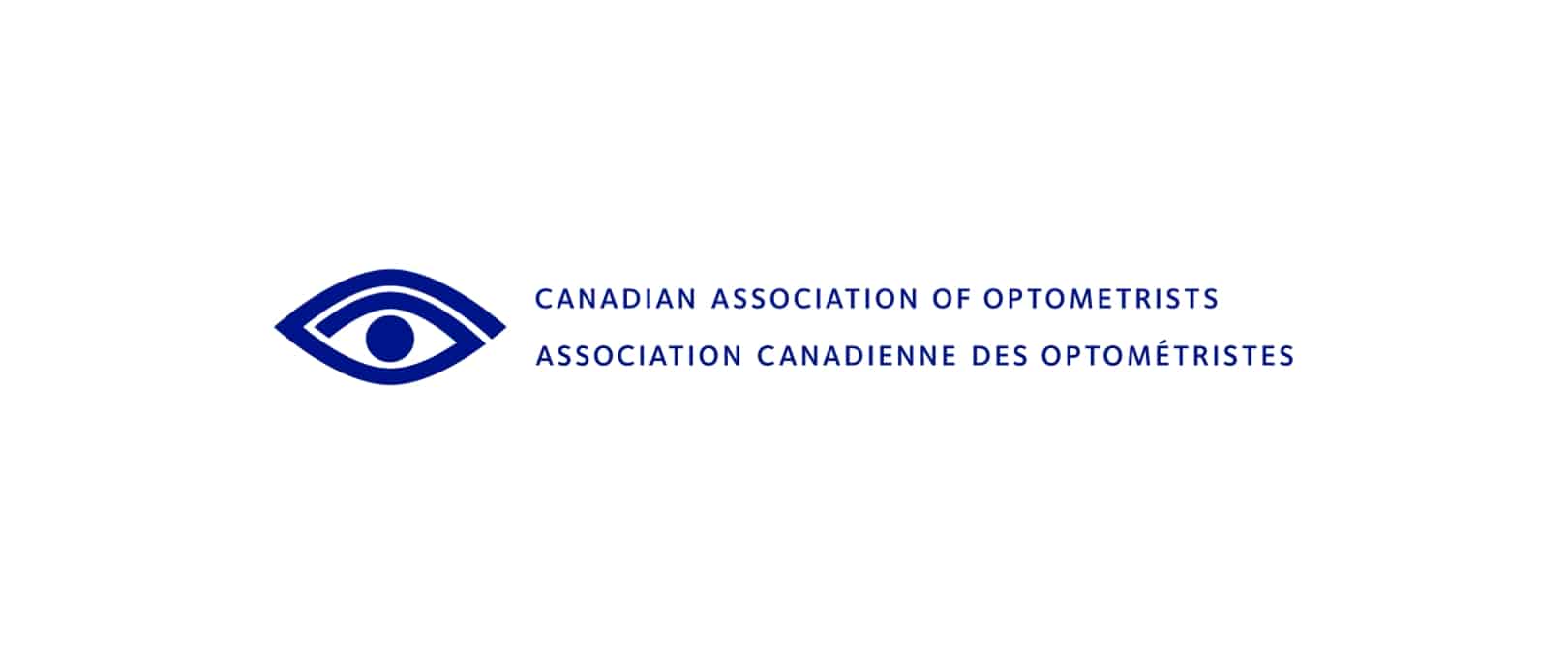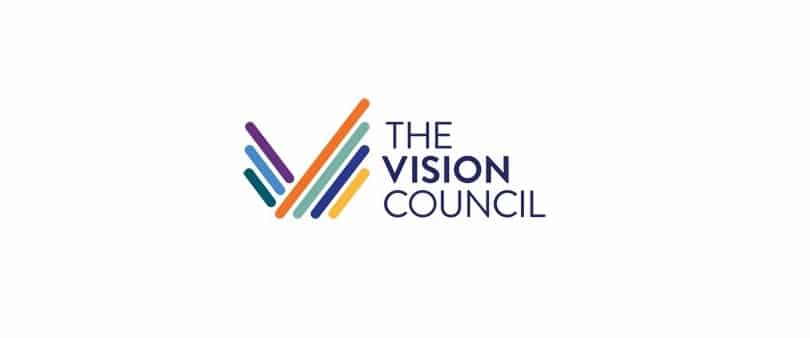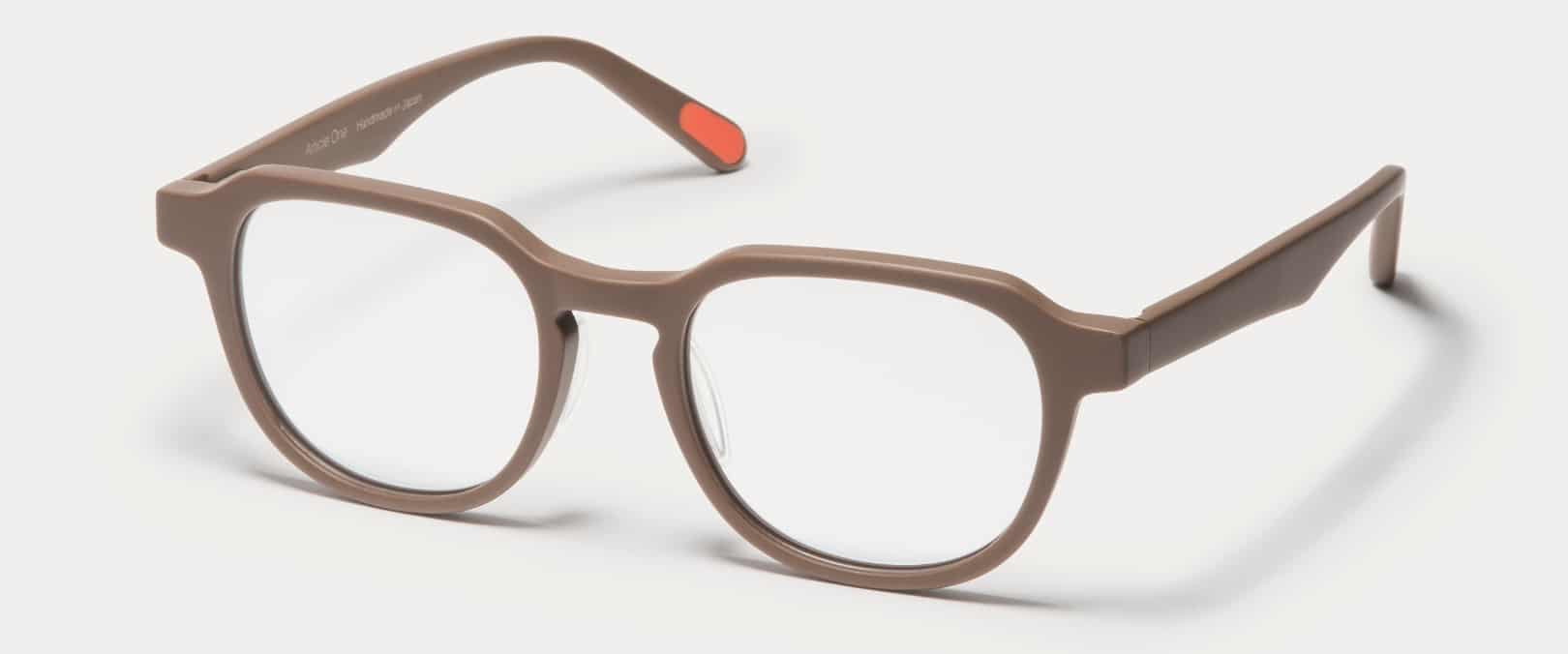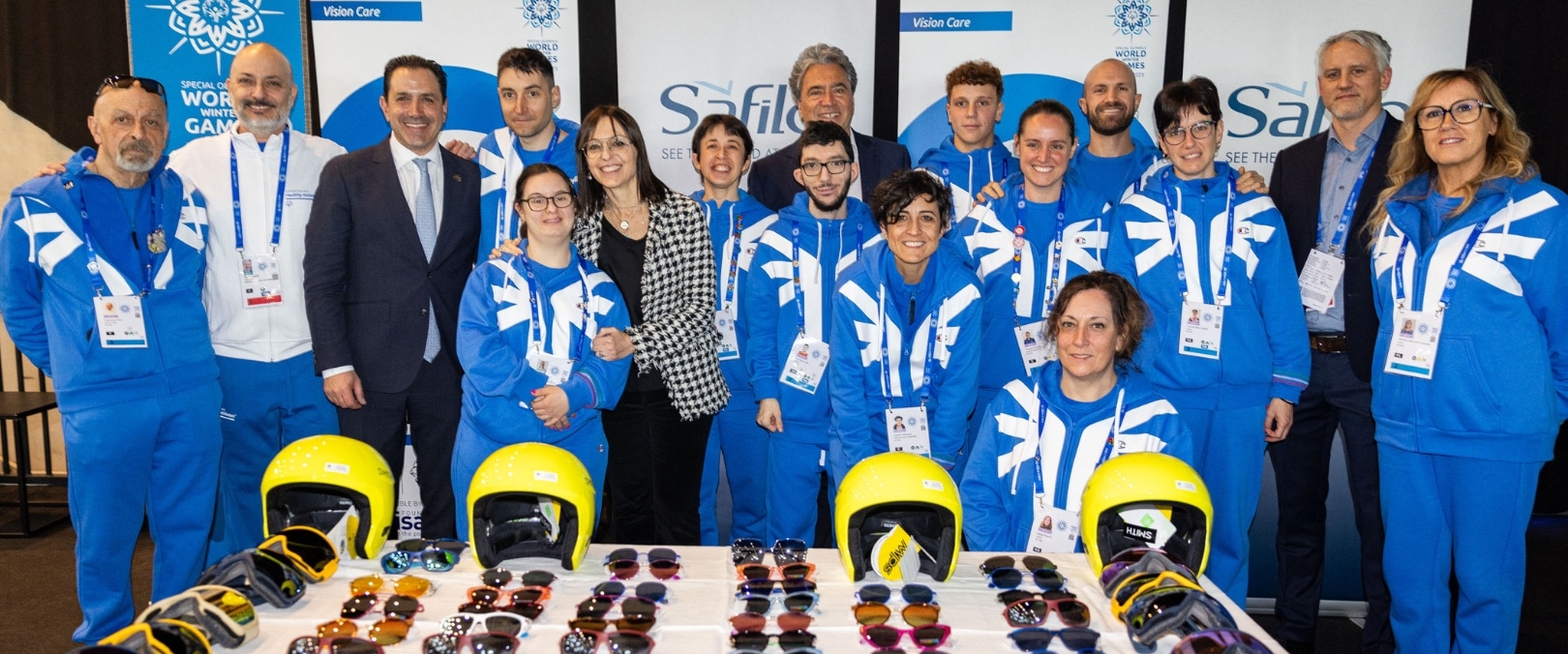CORE Alerts Practitioners to Mask-Associated Dry Eye (MADE)
Wednesday, September 2 2020 | 14 h 35 min | Dry Eye, News, Vision Science
Widespread use of face masks has been determined essential to combat COVID-19’s spread yet is giving rise to a new phenomenon: increased reports of dry, uncomfortable eyes. Experts from the Centre for Ocular Research & Education (CORE) are advising eye care professionals (ECPs) on how to recognize mask-associated dry eye (MADE) and methods to mitigate the condition.
Reports of MADE have circulated since early summer and a recent review concluded that eye dryness and irritation from mask wear may become a problem for a large percentage of the population.
MADE: What, Why and Who’s at Risk?
Masks significantly reduce the outward spread of air. However, exhaled air still needs to disperse; when a mask sits loosely against the face the likely route is upwards. This forces a stream of air over the surface of the eye, creating conditions that accelerate tear film evaporation, leading to dry spots on the ocular surface and discomfort.
In addition to worsening symptoms in patients with pre-existing dry eye disease, MADE can affect a wide-spectrum of others: the elderly who typically have a poorer quality tear film, contact lens wearers, and masked people working extended hours in air-conditioned settings and/or while using digital screens.
Beyond discomfort, MADE may encourage people to rub their eyes for temporary relief—raising the possibility of unwashed hands being brought to the face. In turn, this increases the likelihood of coronavirus infection through the mouth, nose, and to a lesser extent, the eye.
Guidance for Practitioners
CORE suggests that ECPs consider incorporating three MADE-related actions into their examination lane protocols:
- Consider the role of the face mask if there are worsening symptoms and signs in patients with confirmed dry eye disease, or if patients report dry, uncomfortable eyes or variable vision for the first time.
- Routinely ask all patients how their eyes feel while wearing a mask, since many may not think to volunteer their experiences or associate their symptoms with mask use.
- Provide advice on alleviating the symptoms, including using a new CORE-developed infographic to help show how a few simple steps can likely provide relief and minimize reoccurrence.
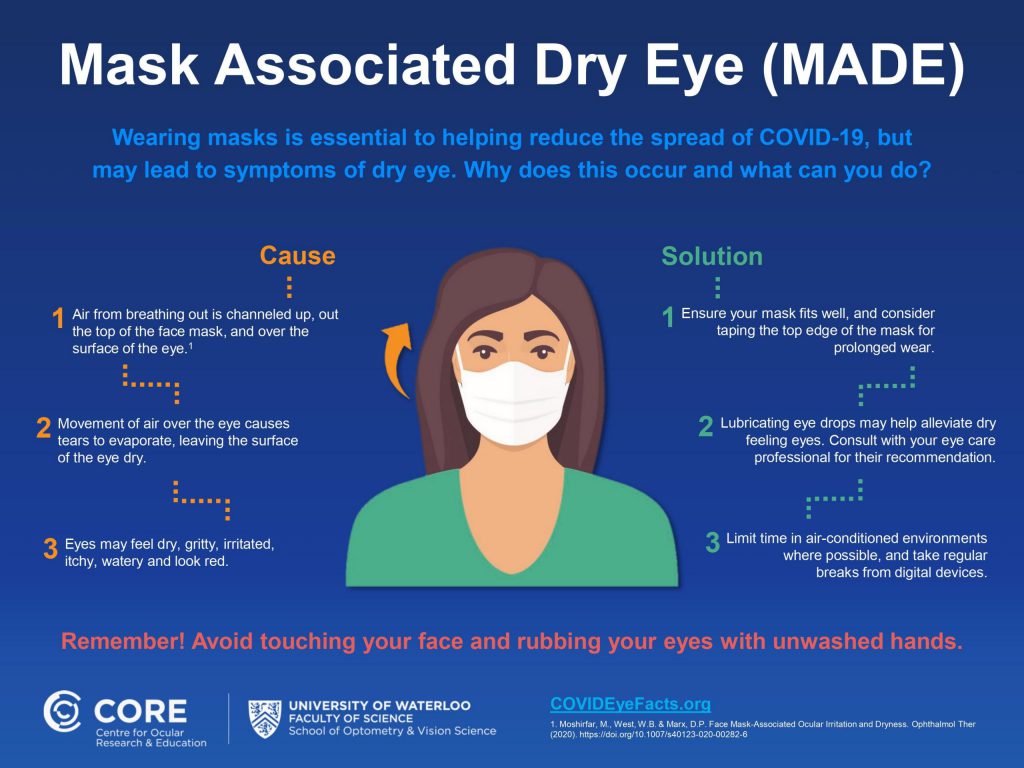
Don’t Ditch the Mask
Dr. Lyndon Jones, director of CORE, is adamant that bringing more attention to MADE should not be used to support anti-mask wearing sentiments.
“Responsibly wearing a mask, even when having to contend with eye dryness, is a critical part of overcoming the global pandemic. The good news is that we understand MADE and can address it—an opportunity for ECPs to further communicate their knowledge and ongoing value to patients at a time when sound, scientific guidance is needed more than ever,” he noted.
Source: CORE





